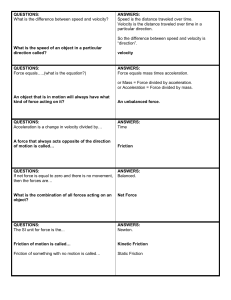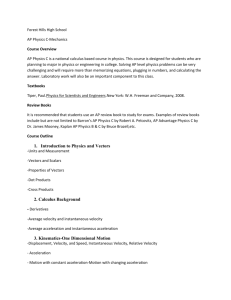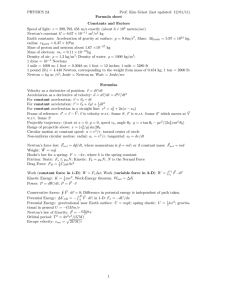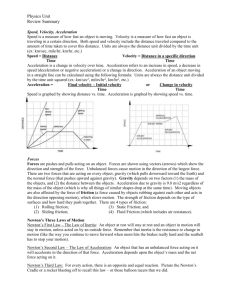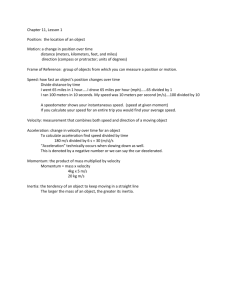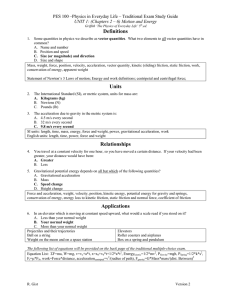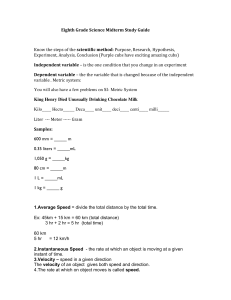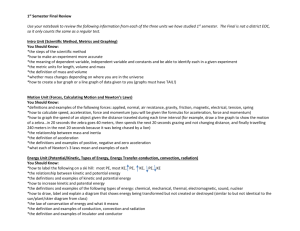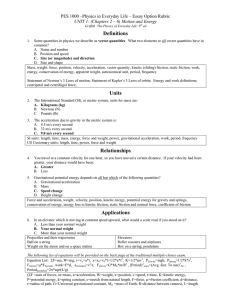Flash Card Printables
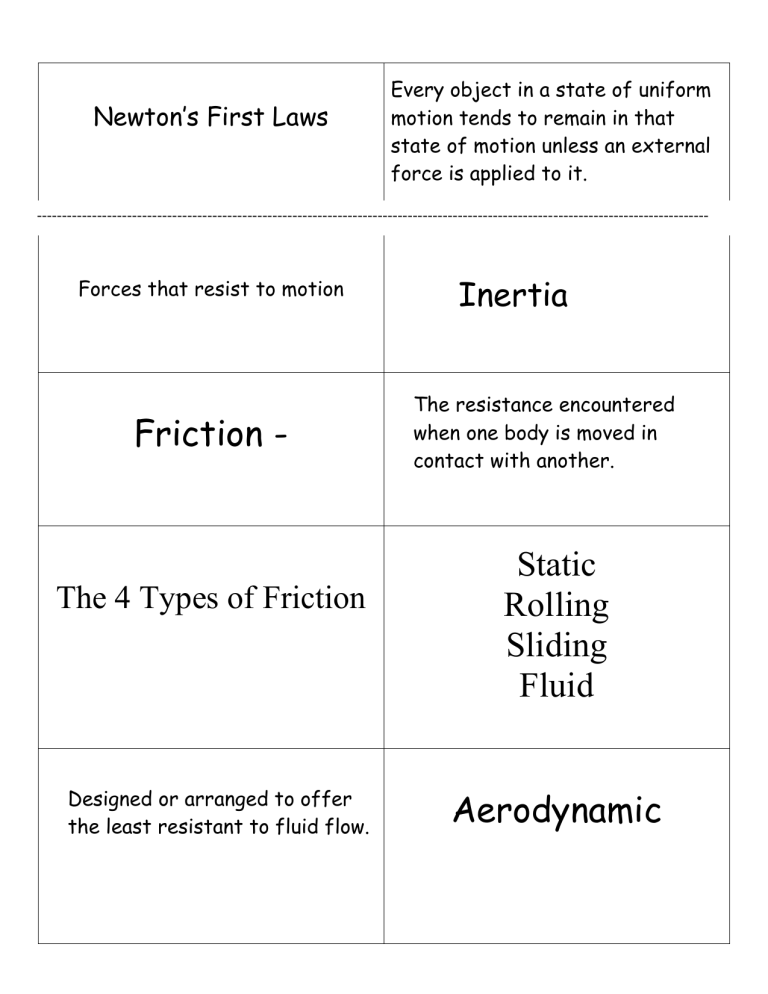
Every object in a state of uniform
Newton’s First Laws motion tends to remain in that state of motion unless an external force is applied to it.
--------------------------------------------------------------------------------------------------------------------------------------
Forces that resist to motion
Friction -
Inertia
The resistance encountered when one body is moved in contact with another.
Static
The 4 Types of Friction Rolling
Sliding
Designed or arranged to offer the least resistant to fluid flow.
Fluid
Aerodynamic
For every action there is an equal and opposite reaction.
Newton’s 2nd Law
Potential Energy: (PE)
The energy that matter has because of its motion and mass.
where m = mass of object
v = speed of object
KE = Energy in Joules
Newtons
3rd Law of Motion
The relationship between an object's mass m, its acceleration a, and the applied force F is F = ma.
The energy stored by an object as a result of its position
Kinetic Energy
Energy due to position and motion; sum of potential and kinetic energies. Includes heat and friction.
Just add Potential
Energy + Kinetic Energy.
Mechanical Energy
Distance over time
80 km / 2 hrs = 40 km / hr
80 miles / 2 hrs = 40 mph
Acceleration
Momentum
Amount of Work (w) done depends on two things:
The amount of Force (F) exerted.
W= F X D
Trajectory
One Newton is the amount of force required to give a 1-kg mass an acceleration of 1 m/s/s.
Speed
The final velocity – the starting velocity, divided by time.
A measure of the motion of a body equal to the product of its mass and velocity.
Mass times velocity
Amount of Work (w) done depends on two things:
The amount of Force (F) exerted.
W= F X D
The path of flying object: the path that a projectile makes through space under the action of given forces such as thrust, wind, and gravity.
One Newton is the amount of force required to give a 1-kg mass an acceleration of 1 m/s/s.
Machine that uses grooved wheels and a rope to raise, lower or move a load.
LEVER
An object with at least one slanting side ending in a sharp edge, which cuts material apart.
Inclined Plane
An inclined plane wrapped around a pole which holds things together or lifts materials.
Two or more simple machines working together.
Pulley
A stiff bar that rests on a support called a fulcrum which lifts or moves loads
WEDGE
A slanting surface connecting a lower level to a higher level
